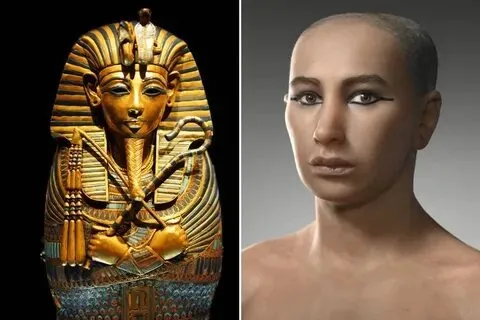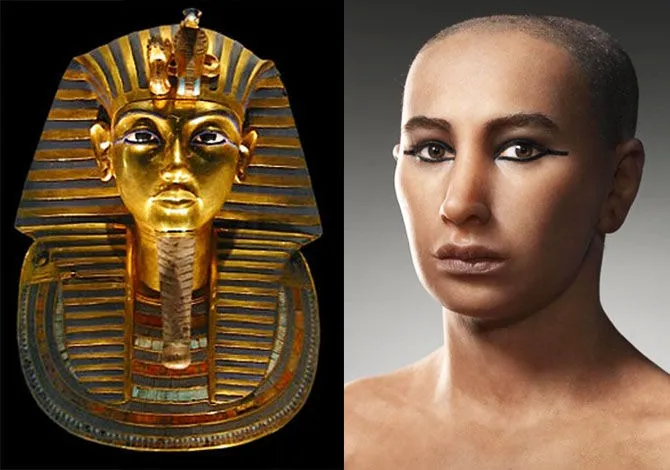Revealing the Face of King Tutankhamun After More Than 3,300 Years

Archaeologists, Egyptologists and experts in various scientific disciplines collaborated on several ambitious studies to recreate Tutankhamun’s face. This groundbreaking effort involved the use of cutting-edge technology, including computed tomography (CT) scans and 3D modeling.

The process began with the acquisition of CT images of Tutankhamun’s mummified remains, which are housed in his tomb in the Valley of the Kings. The detailed images provided information about the pharaoh’s facial and cranial structure. This data was then used to create a three-dimensional model of his face.
The aim of the project was to provide as accurate a representation of the young pharaoh as possible, revealing how he would have looked in life, especially under different ambient lighting conditions. The result was a realistic reconstruction, with delicate details and well-proportioned features. Tutankhamun’s face, which had been hidden behind his solid gold mask for millennia, was now visually available to the world.

The recreation offers a new perspective on one of the most enigmatic figures in ancient history, allowing us to see beyond the symbols and interpretations associated with his reign. It provides a unique glimpse into the face of a young king who ascended the throne at a young age and died prematurely. The availability of Tutankhamun’s face after so many centuries is a testament to the continuing development of archaeological skill and technology, thus providing ancient history with new possibilities for understanding.






